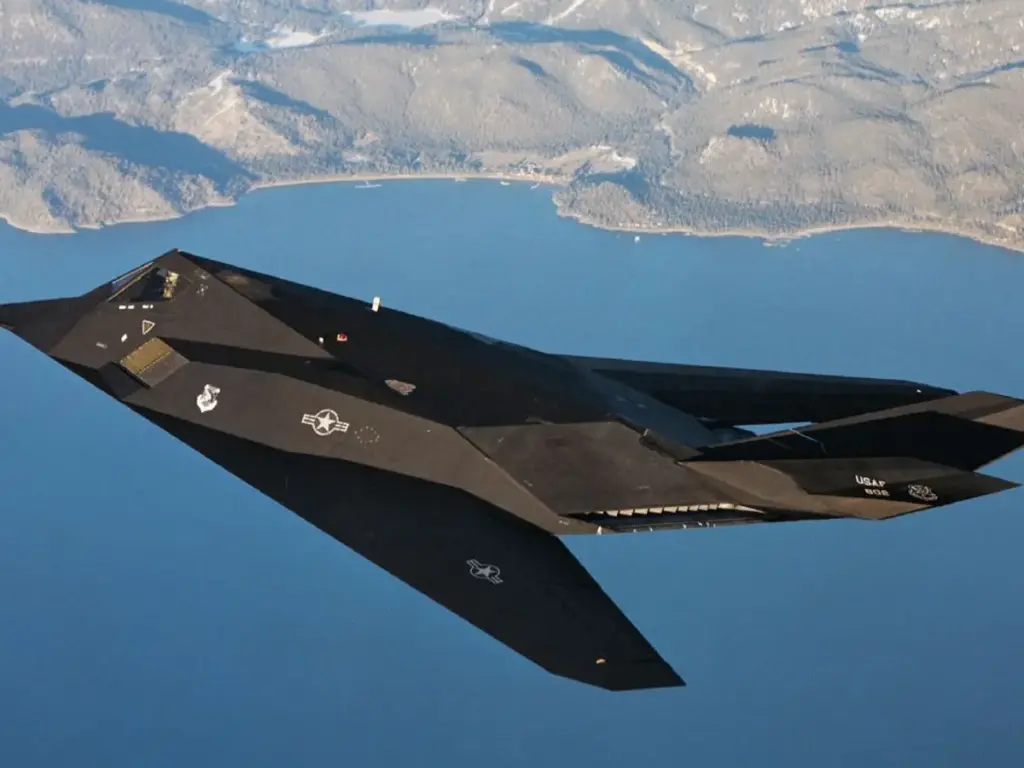
The evolution of stealth technology in fighter jets marks a significant leap from the angular design of the F-117 Nighthawk to the sleek, advanced capabilities of the F-22 Raptor. First flown in 1981, the F-117 utilized flat, faceted panels to scatter radar signals, a method constrained by the computing power of the 1970s. In stark contrast, the F-22, which entered service in 2005, features smooth, blended curves made possible by advanced modeling software, dramatically reducing its radar cross-section (RCS) to about 0.0001 m², a fraction of the F-117’s 0.001 m².
This development follows decades of technological advancements in stealth and aerodynamics. The F-117, limited to subsonic speeds with a top speed of Mach 0.92, avoided breaking the sound barrier to maintain low infrared and radar visibility. The F-22 Raptor, however, can supercruise at Mach 1.8 without afterburners and reach over Mach 2.2 at full thrust, merging stealth with high performance—an achievement the F-117 sacrificed for invisibility.
Technological Advancements in Radar and Sensors
The F-117’s design prioritized stealth over onboard radar, relying on external targeting data and infrared sensors to complete missions. In contrast, the F-22 introduced the Active Electronically Scanned Array (AESA) radar, providing situational awareness without compromising its stealth. This cutting-edge technology includes secure datalinks and passive sensors that detect threats without transmitting signals, offering a blend of stealth and battlefield connectivity.
According to Lockheed Martin, the F-22’s radar systems represent a significant leap in military aviation, providing pilots with unparalleled situational awareness and the ability to engage targets without revealing their position. This evolution underscores the shift from basic radar evasion to comprehensive tactical dominance.
Materials and Maintenance: A New Era
The F-117’s heavy radar-absorbent paint, described as “butter-like putty,” required constant reapplication, adding nearly a tonne to the aircraft’s weight. The F-22, however, employs advanced composites and radar-absorbing materials (RAM) integrated into its structure, significantly reducing maintenance time and cost. The Raptor’s self-healing coatings allow for quick servicing between flights, a stark contrast to the labor-intensive upkeep of its predecessor.
This innovation in materials science not only enhances the F-22’s operational readiness but also extends its service life, reflecting a broader trend in military aviation towards sustainability and efficiency.
From Ground Attack to Multirole Capability
The F-117 was engineered solely for ground attack, capable of carrying only two laser-guided bombs internally. The F-22, by comparison, functions as a multirole stealth fighter, capable of carrying missiles internally for both air combat and precision attacks. It combines stealth with unmatched maneuverability, thrust vectoring, and advanced avionics, making it highly effective in both offensive and defensive operations.
Meanwhile, the F-22’s ability to engage in open-air combat during the day marks a significant departure from the F-117’s reliance on nocturnal operations. This capability allows the Raptor to track, engage, and escape before enemies can detect it, illustrating a shift in military strategy towards integrated networked warfare and sensor fusion.
Implications and Future Prospects
The transition from the F-117 to the F-22 Raptor highlights the rapid pace of technological advancement in military aviation. As stealth technology continues to evolve, future developments are likely to focus on further reducing radar visibility while enhancing connectivity and operational flexibility. The integration of artificial intelligence and machine learning into these systems could further revolutionize air combat, providing pilots with real-time data analysis and decision-making support.
As nations around the world invest in next-generation stealth technology, the lessons learned from the F-117 and F-22 will undoubtedly inform future designs, ensuring that air superiority remains a key component of national defense strategies.
In conclusion, the evolution from the F-117 Nighthawk to the F-22 Raptor represents not just a leap in stealth capabilities but a transformation in how air combat is conducted, setting the stage for the future of aerial warfare.






